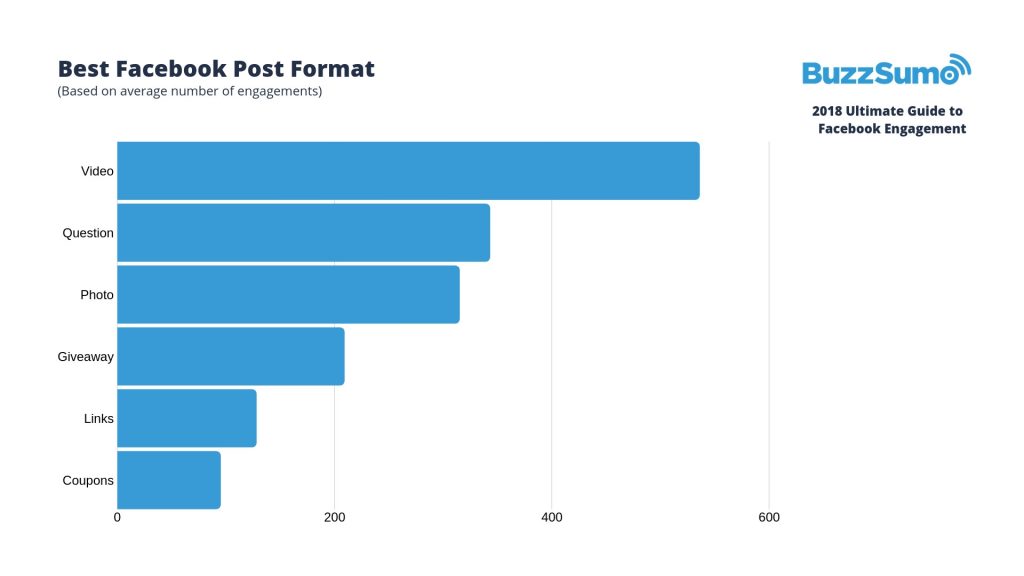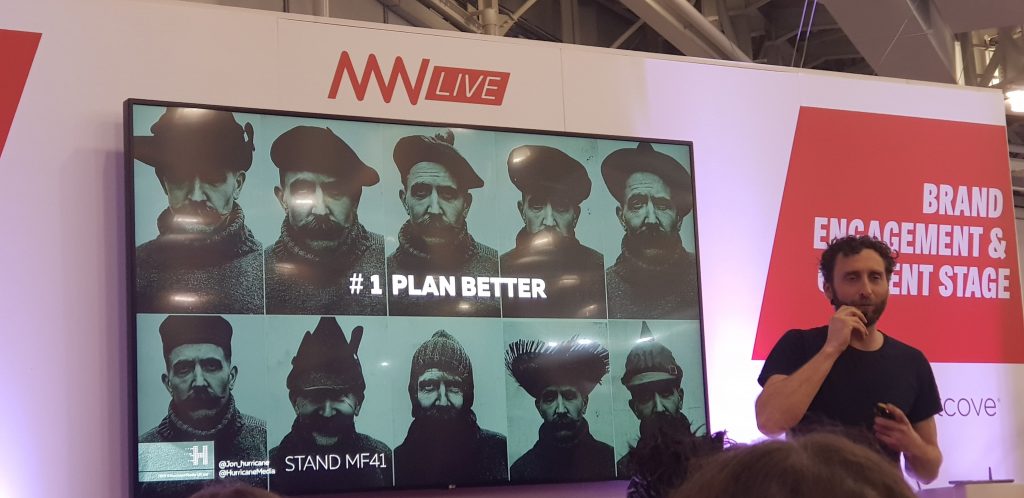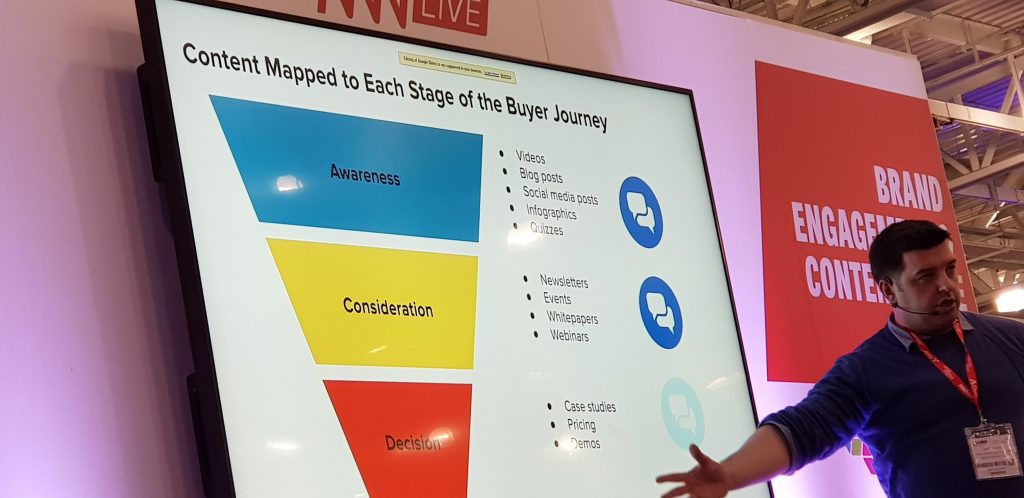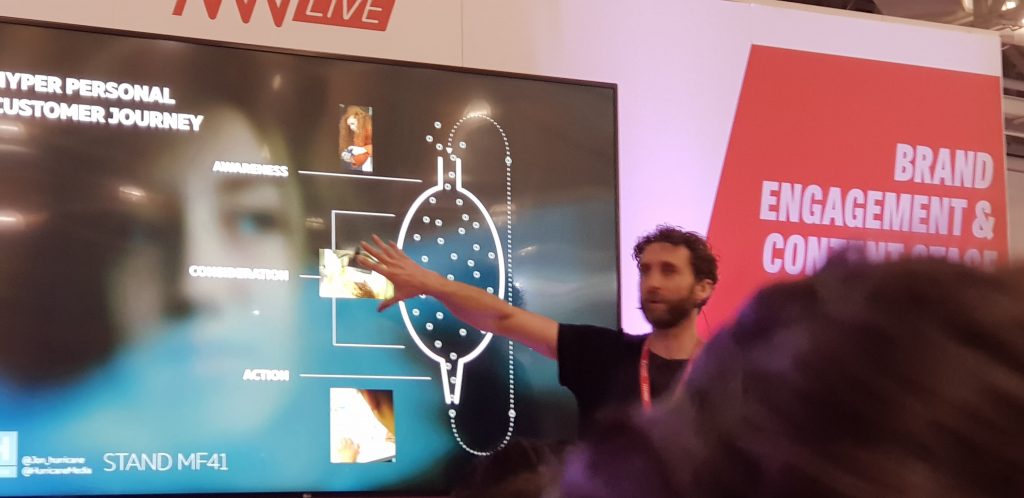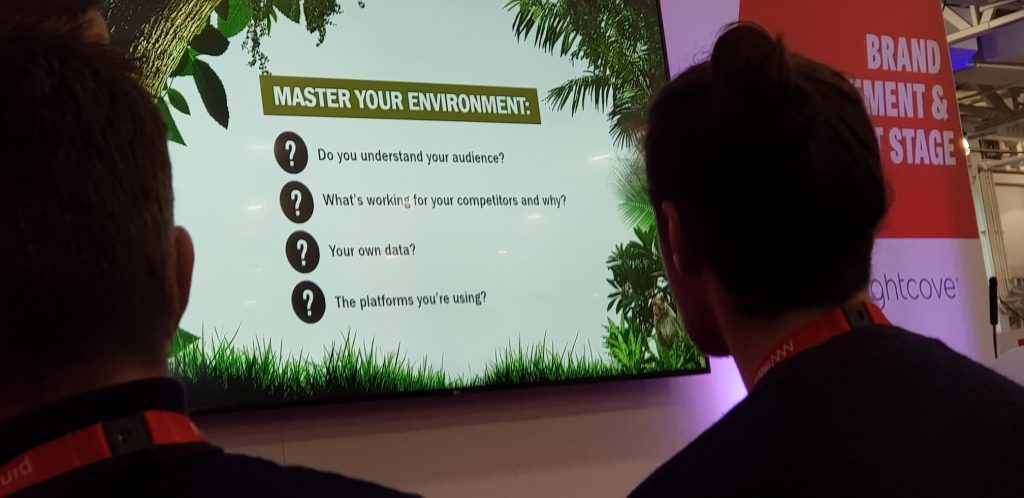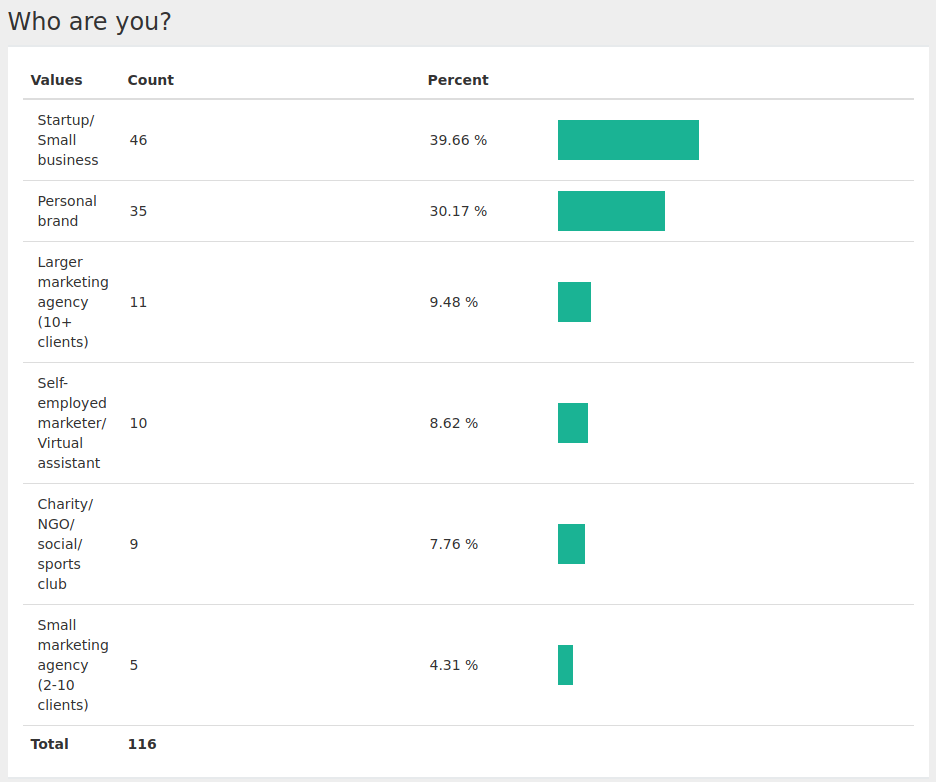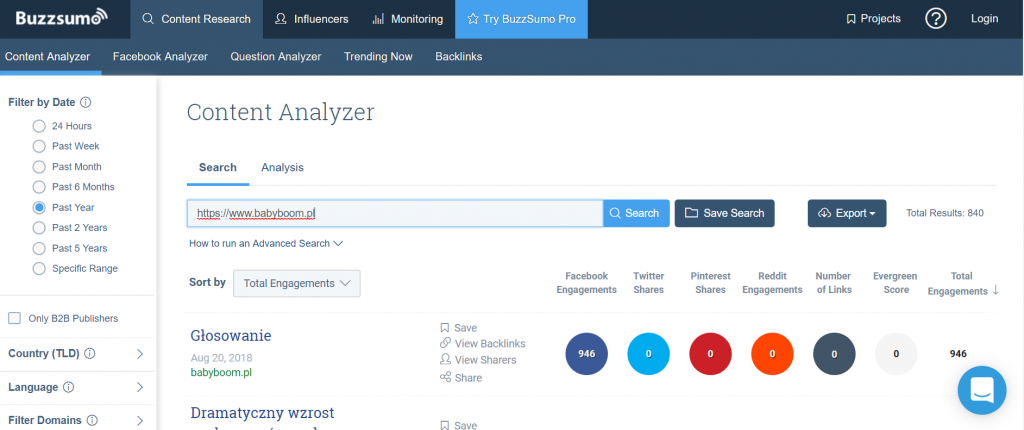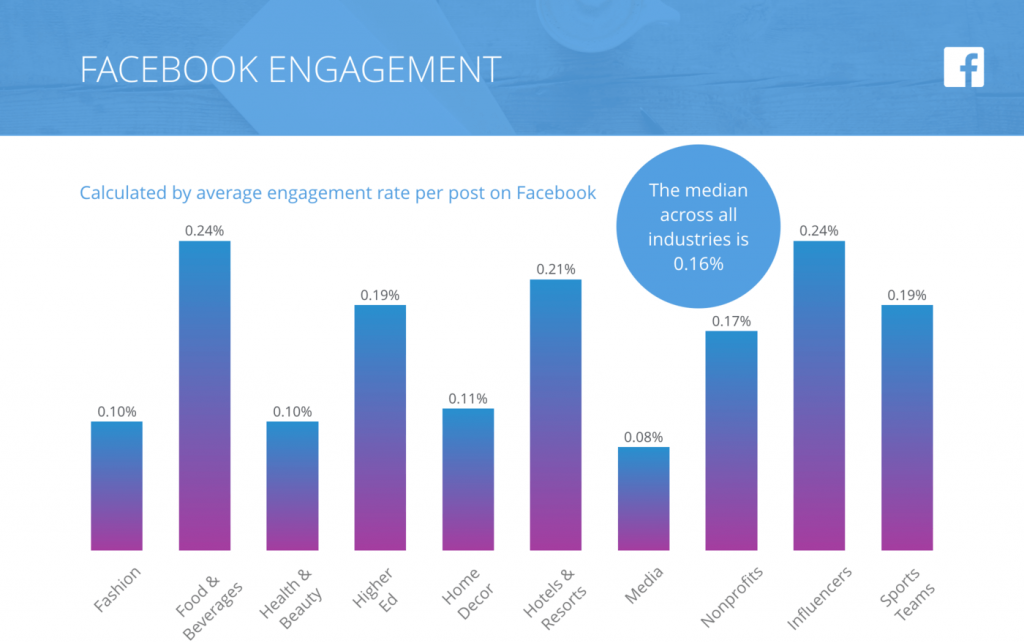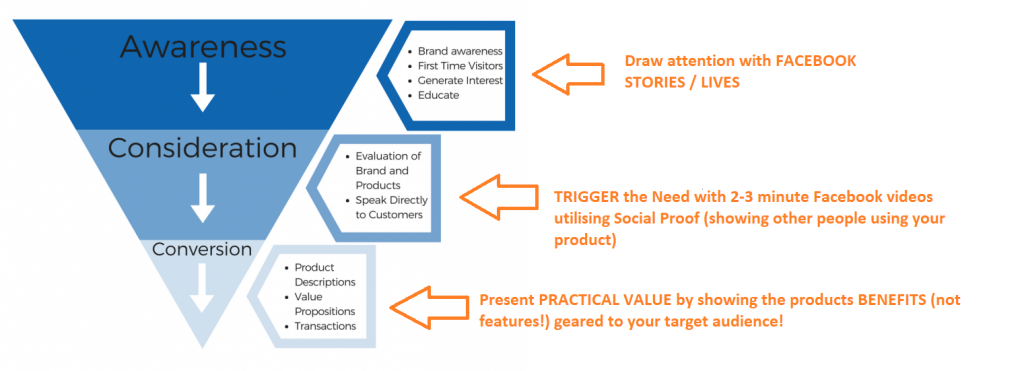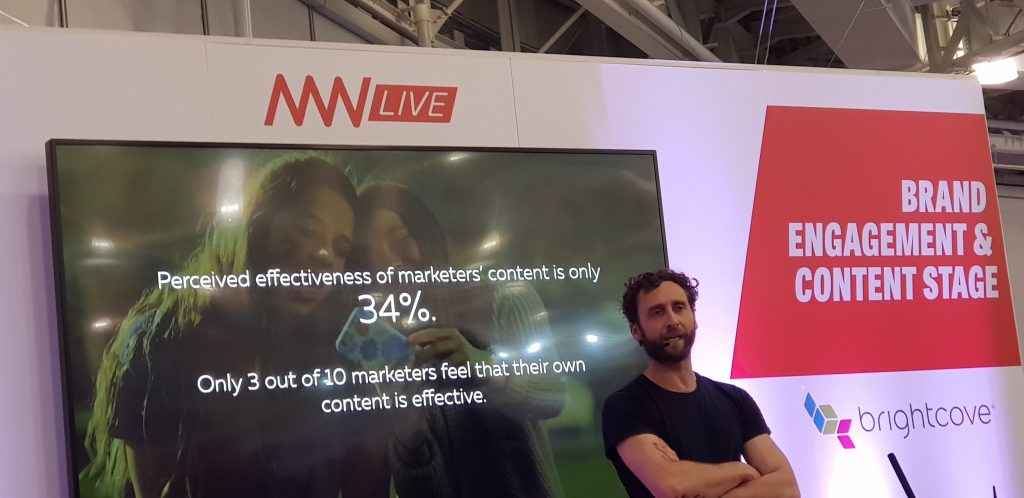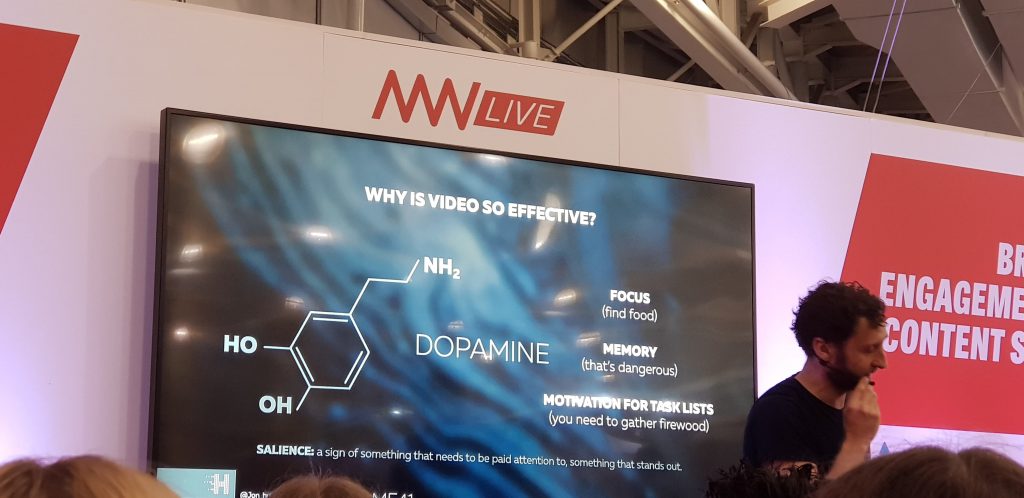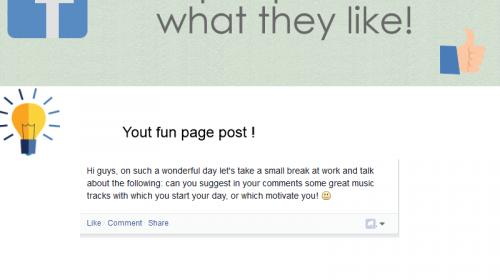Facebook video marketing strategy – a summary
Before we dive into details, let’s summarize what Facebook video marketing strategy is about. Here’s a short version of Facebook Video Marketing Strategy in bullet points for the impatient ones (I am a person with zero patience myself, so cheers to lists!)
1) Start with a WHY
The key question you need to answer in the process of creating your Facebook Video Marketing Strategy is quite simple:
What is the overall goal of your campaign?
If: get 100 new customers – then HOW are you going to get there? –> This is your STRATEGY.
Be realistic in defining your goals:
How many leads do you need to get 100 new customers with your current conversion rate?
Say you have a conversion rate of 3%.
This means that in order to convert 100 new customers, you need to reach over 3000 qualified leads.
2) Break down the journey to your GOAL into discrete STEPS.
DEFINE what you are going to do each STEP in line with the STAGE of your CUSTOMER JOURNEY:
1) AWARENESS
2) CONSIDERATION
3) CONVERSION (decision)
The content of your videos will depend on the stage in your customer journey you want to use them for. I’ll zoom in on that in a second, but before you decide on anything you need to:
3) Analyse your ENVIRONMENT:
1) Analyse and understand your AUDIENCE
Without knowing who your target audience is inside out, you won’t be able to attracts qualified leads.
In order to create a Facebook Video Marketing Strategy that will make these qualified leads fly to your content like moths to fire, you need to know:
What content does your audience engage with most?
How to do this?
- Analyse your own Facebook/Instagram/Twitter/ LinkedIn INSIGHTS
- Google Analytics
- User Surveys and Market Research Reports:
We @Postfity.com know that the majority of our users are startups, SMEs and personal brands – so we gear our content to them.
2) Check what WORKS for your COMPETITION
If your competition attracts your target audience, there’s a big chance what works for them will also work for you.
How to find out what works for them? Use BuzzSumo to discover the titles of the most-shared posts published by your competition:
3) Understand the PLATFORMS you’re using
Are you using the right platform for your industry?
What content works best for this platform in terms of organic reach and engagement?
Source: https://www.rivaliq.com/blog/2018-social-media-industry-benchmark-report/
A lot of brands are using the wrong social media platforms (e.g. Instagram, Pinterest) just because they are trendy – while they should be using other platforms (LinkedIn, Twitter) for their industry / audience.
Check which platform will be best for your industry and your audience. It may not be Facebook!* And then, creating a Facebook Video Marketing Strategy for your brand will just be a waste of time!
*According to marketing firm Blue Corona, Facebook is used mostly by 25-34-year-olds. Therefore: if teenagers are your target audience, Facebook may be the wrong platform for you!
HOW to check which social media platform will be best for your business?
Check stats on engagement for different industries on FB/IG/Twitter/LinkedIn – a good study by Rival IQ HERE
4) Create content relevant to each stage in the customer journey
Make sure each piece of content on the way has a clear GOAL pushing your lead down the customer journey:
e.g. a blog post’s (=STAGE 1) GOAL can be to make the reader sign-up for our NEWSLETTER (=STAGE 2);
Stages in the customer journey + relevant content types:
1) Awareness – Videos, Blog posts, Social Media Posts, Infographics, Quizzes
2) Consideration – Newsletters, Events, Whitepapers, Webinars
3) Conversion (decision) – Case studies, Pricing, Demo
5) Use different kind of VIDEO at each stage of the customer journey:
Adapted from: https://www.fourthsource.com/content-marketing/how-to-format-a-content-marketing-strategy-according-to-user-intent-23417
1. Awareness stage:
Use short, punchy video content telling engaging STORIES appealing to basic Human Psychology – Draw Attention using Emotion, Social currency/ Vanity/ Doing better than others, Social Proof/ Tribe behaviour:
- Social Curency: making someone feel more cool/ exclusive/ smart about using your products
- Social Proof/ Tribe behaviour – showing how many people are already using your product, have already responded to the CTA (e.g. 15,000 have already signed the petition; 76% of Start-ups and SMEs use our product)
- FOMO – Fear of Missing Out)/ Loss aversion
Best kind of Facebook Video at this stage: Facebook Stories
Facebook Stories are a great medium to use at the awareness stage. Their temporary nature (they disappear after 24 hours) only adds to their appeal. Facebook stories appeal to our sense of urgency and compel us to watch them NOW by fuelling our Fear of Missing Out.
2) Consideration stage:
Produce a lot of video content nurturing the relationship and TRIGGERING consumers to think about your product/service.
Build the need:
e.g. a series of videos how to make the perfect …(5 types of coffee) = triggering the need for a new coffee machine)
Best kind of Facebook Video at this stage: Facebook Lives, Facebook Video Ads (3-4 minutes) ustilising Social Proof (show other people using your product/ service)
3) Conversion / Decision Stage:
Show Practical VALUE of your product.
Video sales pitches speaking the language of BENEFITS – NOT features!
Best kind of Facebook Video at this stage: Facebook Lives, Facebook Video Ads (3-4 minutes).
5) A/B TEST different creatives and CTAs at each stage – and MEASURE
At each stage, do split tests (A/B tests) of your video creatives / call to actions. Sometimes just changing the CTA button under your video can boost conversions by 25%!
Why Video?
Why should video become the backbone of your social media marketing strategy in 2019?
It is proven that video content gets 12 x the number of shares as other types of posts.
And there is a good reason for it.
Video is the medium that is most engaging as it’s best for telling a story. And storytelling is deeply rooted in our psychology.
We crave new content all the time. It makes our brain fire and release dopamine – a powerful neurotransmitter that makes us feel alert and focused. But also excited and engaged:
And that dopamine rush is addictive.
That’s probably why an average adult checks his/her phone every 7 minutes!
How does that translate into your Facebook Video Content Strategy?
Using Facebook Stories will be most effective at the awareness building stage of your customer journey (top of the funnel):
